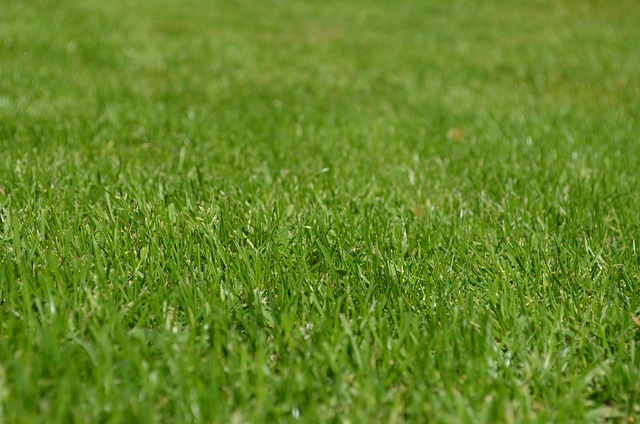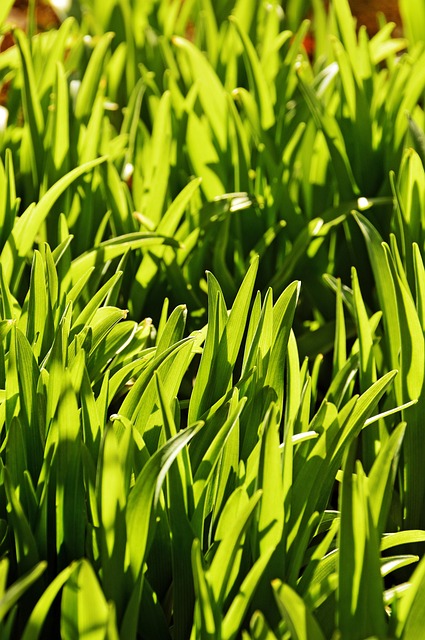In Colorado Springs, understanding lawn fungus is key to managing drought stress due to its hot summers and dry periods. Look for discolored grass patches and unusual patterns, as fungi often hide beneath the soil surface. Environmental factors like prolonged dry spells followed by sudden moisture also indicate fungal issues. Identify fungi through lab samples for tailored management strategies. Improve soil health with organic matter and aeration, select drought-tolerant grass varieties, use efficient irrigation systems, and monitor for fungus early to enhance lawn resilience and water conservation.
In the face of rising temperatures and decreasing water availability, understanding and managing drought stress in lawns is crucial for residents of Colorado Springs. This article provides a comprehensive guide to identifying and addressing lawn issues, with a specific focus on lawn fungus in our region. We explore holistic strategies, from natural solutions to targeted interventions, empowering homeowners to enhance their lawn’s resilience against dry conditions and ensuring healthier, more vibrant outdoor spaces. Learn how to recognize signs of stress, implement effective drought-mitigation tactics, and cultivate a thriving lawn despite the challenges of Colorado’s climate.
- Understanding Lawn Fungus in Colorado Springs: Causes and Identification
- Strategies to Mitigate Drought Stress: A Holistic Approach for Healthy Lawns
- Natural Solutions: Enhancing Lawn Resilience in Dry Conditions
Understanding Lawn Fungus in Colorado Springs: Causes and Identification

In Colorado Springs, understanding lawn fungus is crucial for effective drought stress solutions. The region’s unique climate, characterized by hot summers and dry periods, creates conditions favorable for fungal growth. Identified as one of the top causes of lawn decline, fungus can be challenging to spot due to its often hidden nature beneath the soil surface or within the thatch layer. However, early detection is key. Look for patches of discolored grass, ranging from brown to yellow, which may appear patchy or sparse compared to surrounding areas. It’s also important to note unusual patterns or irregular shapes in your lawn as potential signs of infestation.
When identifying lawn fungus in Colorado Springs, homeowners should consider environmental factors and typical symptoms. Fungal diseases often thrive during prolonged dry spells followed by sudden moisture, creating the perfect environment for spore development and spread. If you suspect a fungal issue, take samples to a local lab or garden center for positive identification. This step is essential as different fungi require distinct management strategies, ensuring that your chosen solution is tailored to address the specific fungus affecting your lawn.
Strategies to Mitigate Drought Stress: A Holistic Approach for Healthy Lawns

Lawn plant drought stress is a prevalent issue, especially in regions like Colorado Springs with its semi-arid climate. Mitigating this stress requires a holistic approach that considers both the physical and physiological needs of the lawn. One effective strategy is to improve soil health through organic matter addition and proper aeration, as healthy soil can better retain water and nutrients, crucial for drought resistance.
Additionally, choosing drought-tolerant grass varieties suited to Colorado’s conditions can significantly reduce watering demands. Implementing a smart irrigation system that delivers water efficiently, such as drip or microspraying, ensures targeted watering without waste. Regular monitoring is key; identifying lawn fungus early in the process of drought stress can prevent further damage. In Colorado Springs, where hot and dry summers are common, proactive measures like these not only ensure a lush, healthy lawn but also contribute to water conservation efforts.
Natural Solutions: Enhancing Lawn Resilience in Dry Conditions

In dry conditions, such as those experienced in Colorado Springs, enhancing lawn resilience to drought stress is crucial. Natural solutions offer an effective way to strengthen your lawn against water scarcity. One of the most common challenges is identifying lawn fungus, which thrives in hot and dry environments. Regular monitoring for signs like discolored patches, wilted grass, or mold growth is essential. If detected early, fungal infections can be treated with organic fungicides or natural remedies like garlic or neem oil, promoting a healthier lawn ecosystem.
Additionally, selecting drought-resistant grass species suitable for Colorado’s climate is a proactive step. Deep watering techniques, such as drip irrigation, encourage deep root growth, enabling the lawn to access moisture from lower soil levels during droughts. Mulching can also help retain soil moisture and regulate temperature, fostering a more resilient lawn that better endures dry conditions without additional stress from fungal infections.
In conclusion, managing lawn drought stress in Colorado Springs requires a multifaceted strategy. By understanding and identifying lawn fungus, implementing holistic approaches to mitigate drought, and leveraging natural solutions to enhance resilience, homeowners can achieve healthy, vibrant lawns even in dry conditions. These strategies ensure your lawn thrives, making it a beautiful testament to effective drought stress management. Remember that proactive care is key, so take a dive into these solutions to keep your lawn flourishing.
